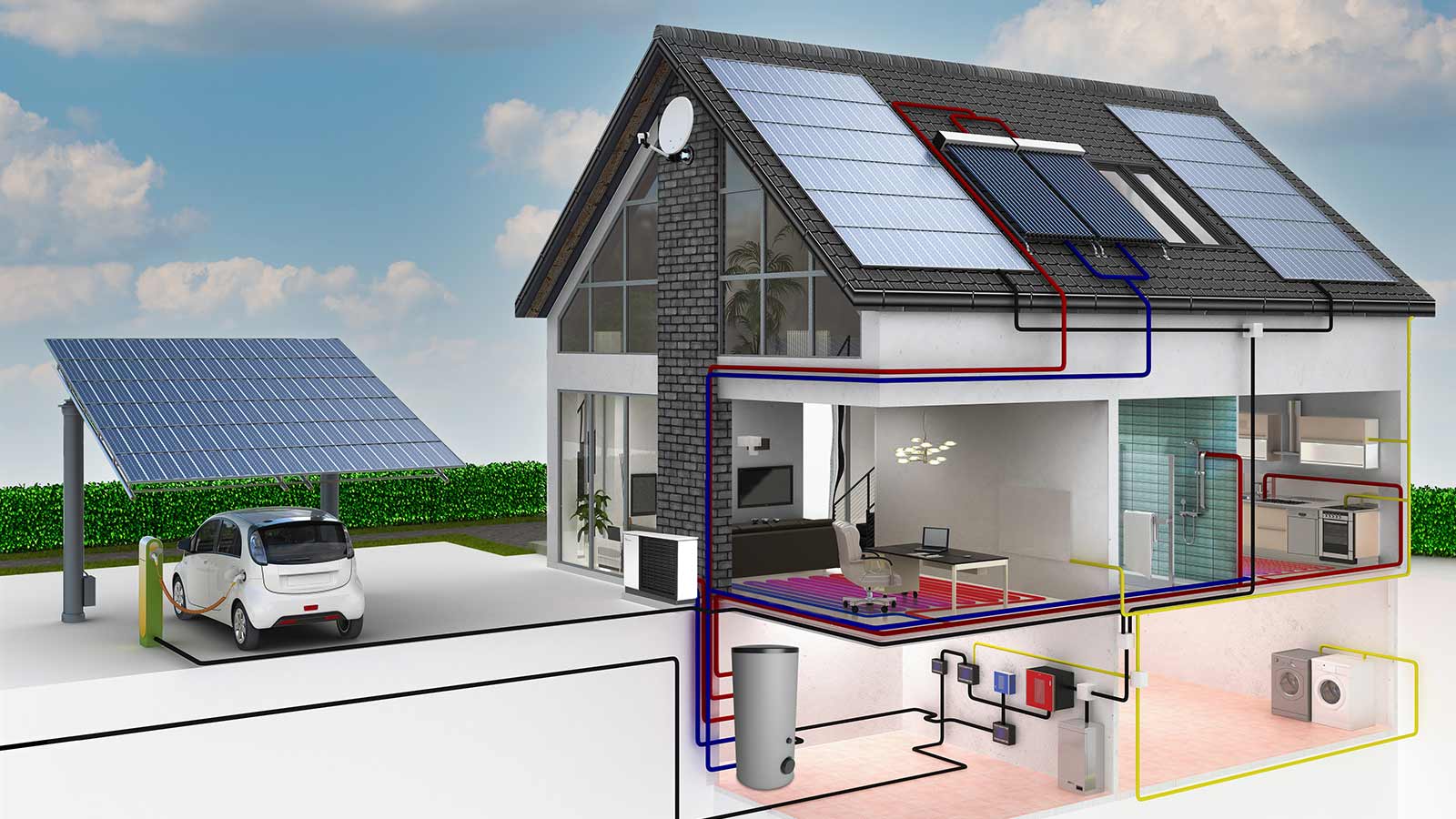Combination of photovoltaic system and heating pump
Homeowners seeking to lower their carbon footprint and save money on their energy costs are increasingly turning to the combination of a thermal pump and photovoltaic (PV) technology. Many advantages come with this mix of renewable energy sources, including improved energy efficiency, economic savings, and diminished environmental effect.
A heating pump, often known as a heat pump, is a machine that transfers heat from one place to another using a very small amount of energy. It works by drawing heat from the air, the earth, or the water and transferring it to the heating system of a house. Given that they may produce up to four times as much energy as they consume, heat pumps are a reliable and economical way to heat and cool a house.
On the other hand, photovoltaic technology is a type of renewable energy that turns sunlight into electricity using solar panels. PV panels can produce electricity that can be used to power lighting and home appliances when they are mounted on the top of a building. PV systems can assist households in reducing their reliance on conventional fossil fuels and their carbon footprint by utilizing the power of the sun.
Combining heat pumps and photovoltaic (PV) systems can result in a full solution for both home heating and electricity production. The following are some of the main advantages of fusing these technologies:
1. An increase in energy efficiency
Homeowners can increase the energy efficiency of their homes by integrating photovoltaic technology and a heating pump. During the day, the PV system produces electricity that can be used to run the heat pump. As a result, the heat pump won’t need to draw power from the grid and can operate on renewable energy. The amount of energy needed to heat and cool a home can be decreased as a result, resulting in cheaper energy costs and a smaller carbon footprint.
2. Money saving
The potential for cost savings is another advantage of pairing a thermal pump with photovoltaic technology. Homeowners can lessen their dependency on the power grid by producing their own electricity using a PV system. Their overall energy costs as well as their electricity bills may be reduced as a result. A PV installation may be made more affordable by the numerous government and utility incentives provided to homes that install renewable energy systems.
3. Less influence on the environment
Combining renewable energy sources has many advantages, one of which is a lessened negative influence on the environment. Homeowners can lessen their dependency on fossil fuels, which are a significant source of greenhouse gas emissions, by producing power using a PV system. Furthermore, heat pumps are a reliable and sustainable method.
Also, because they utilize a very minimal amount of energy to transfer heat from one place to another, heat pumps are an effective and environmentally friendly way to heat and cool a home. Homeowners may drastically lower their carbon footprint and contribute to reducing the consequences of climate change by combining these technologies.
4. A greater degree of energy independence
Homeowners can increase their energy independence by using a PV system to generate their own electricity. They can potentially escape power outages during times of heavy demand because they are less dependent on the grid for power as a result. Also, homeowners can use renewable energy to heat and cool their houses with a heat pump rather than non-renewable energy sources.
5. Long-term investments
Last but not least, using a thermal pump along with photovoltaic technology can result in long-term savings. While installing a PV system plus a heat pump may cost more up front than installing conventional electricity and heating systems, the savings over time may be substantial. Homeowners can potentially save thousands of dollars over the course of the systems by producing their own electricity and utilizing renewable energy to heat and cool their houses




